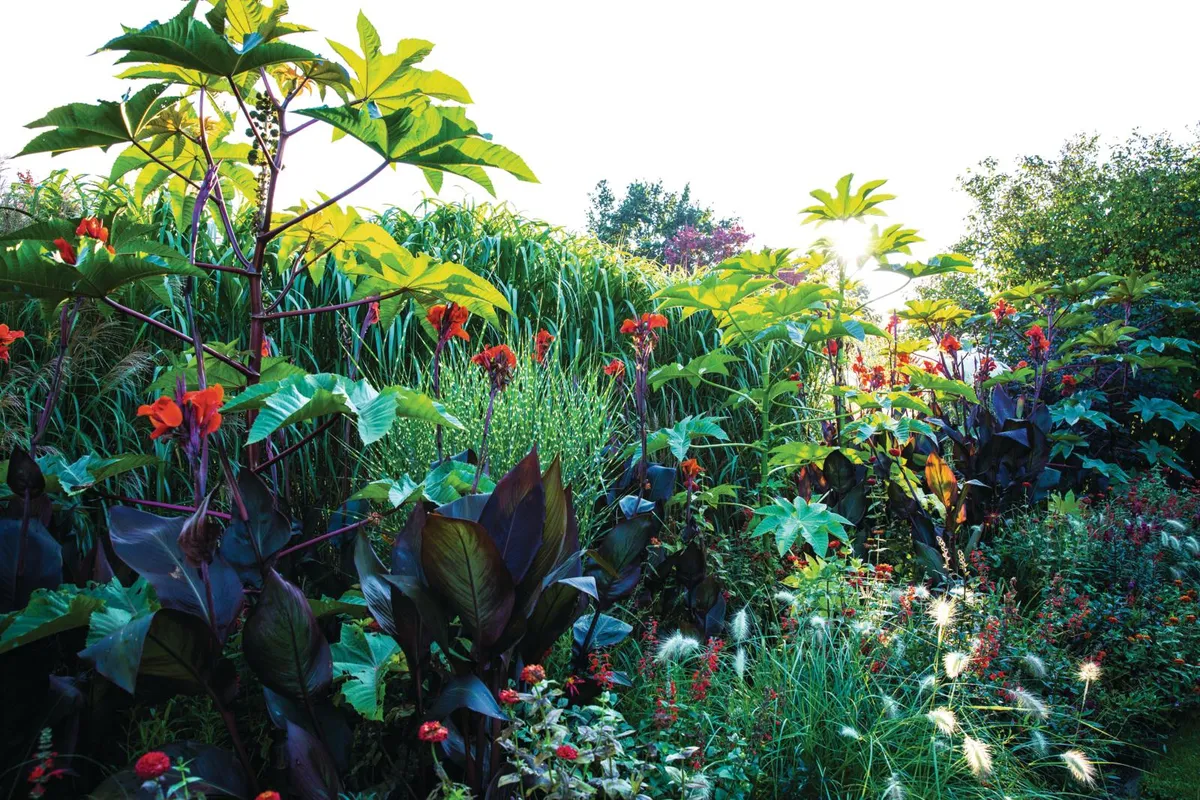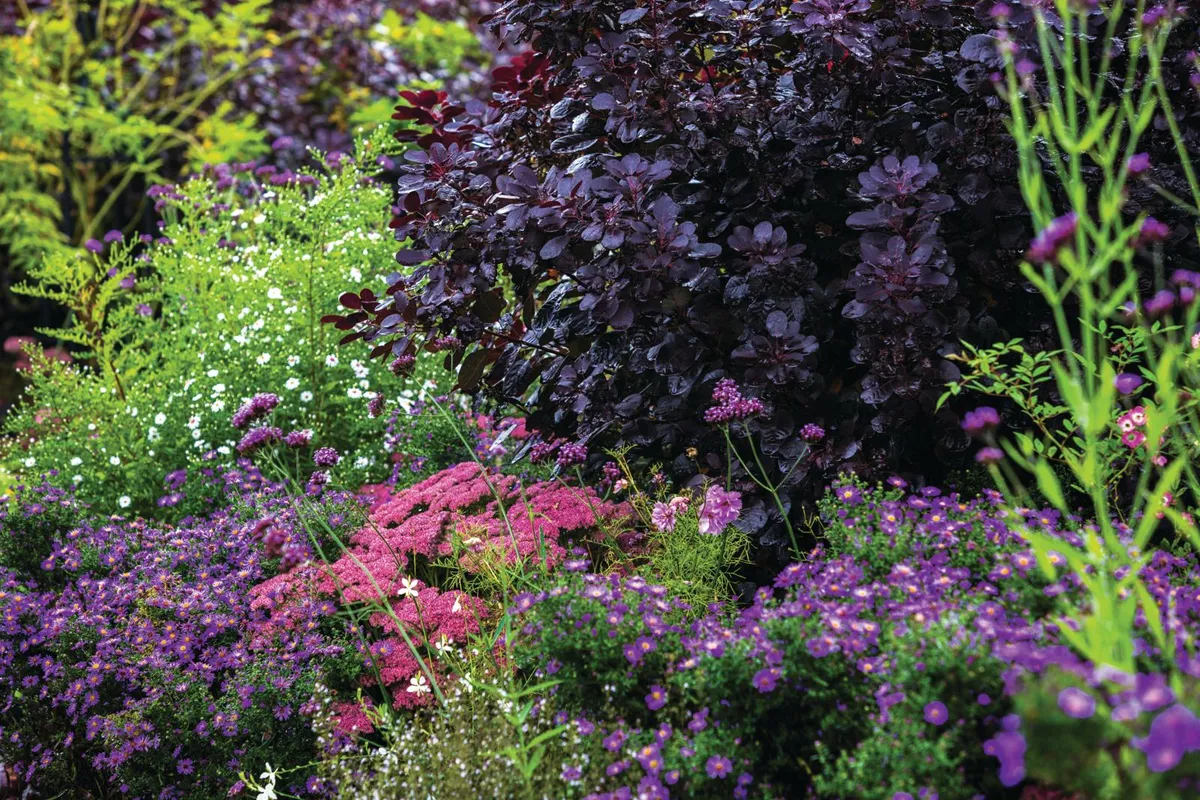Sichtungsgarten Weihenstephan, is Europe's leading research and teaching garden. If you've ever met a German gardener or landscape designer, the chances are, they studied here. Its a unique institution, with no real equivalent in the English-speaking world, a whole campus, which sprawls attractively across a couple of hills and the intervening valley, and unlike most such places it is not the buildings that make the impact but the gardens, research plots and fields of crops. The 'Sichtungsgarten' (Show Garden) occupies one of the hilltops, the famous brewery another, while very nearby is another hilltop, the Domberg of the little town of Freising, with its 'Dom' (cathedral), one of the most fabulous of all the fabulous Baroque churches of southern Germany. Below Noel Kingsbury discussed the importance of this garden and the trials they host there.
First impressions

I remember very clearly my first visit, back in 1994. I had driven from England, en route to Bratislava, to visit Jo (now my wife) who was then working in Slovakia. I had heard rumours of interesting developments in planting design in Germany, but in pre-internet days had not been able to follow them up. Then, with impeccable timing, Brita von Schoenaich, a London-based landscape architect and part-time teacher at Kew, had organised a conference at Kew that had introduced several German speakers, along with Beth Chatto, to a British audience, eager to hear more of what was going on beyond our shores. This, remember, was the era of garden history, of an obsession with endlessly rediscovering Gertrude Jekyll, when Rosemary Verey, with her pernickety and fussily precise planting design, dominated British garden making. Now, with some hard information, I knew where to go.
My first stop had been in Franconia, the northern part of Bavaria, where I had spent half a day with Hans Simon, a most knowledgeable but idiosyncratic plantsman, with a nursery whose chaos had exceeded the worst I had ever seen in Britain (these really untidy, but full-of-hidden-gems nurseries now seem to be a thing of the past). Dr Simon had been very generous with his time showing me around his town where he had undertaken various planting design projects, all of which seemed to blend good garden plants with wildflowers. They had been interesting, but did not have the impact I had seen from slides at the Kew conference.
Gaining an understanding
Weihenstephan had been my second stop. I must admit I did not quite 'get it' at first, but that is often true for first time visitors. Something to do with the long beds into which most of it is divided makes it very consciously a research and teaching garden. Later, the next year in fact, after many more visits to German parks and gardens, it all made much more sense. Some people do respond immediately; a gardening colleague in Scotland, Vincent Dudley describes his visit to Weihenstephan as being “a light switch moment... linear beds with fantastic colour combinations and the beds that made you look at the planting from many different angles”. And… part of the special feeling that Weihenstephan has is not to do with the physical surroundings but the people: the students looking around and taking notes, and the visitors, many of whom have travelled a long way to come here, whose excitement and joy adds a lively soundtrack.
I quickly learned that the pattern of linear beds and paths that dominate the main area here rapidly disappear when you look across, when all you can see is an illusion of endless perennials and low shrubs. Different planting styles occupy different beds, usually on a very generous scale. It's a very good place to get to grips with what makes planting here so different to British planting (although in fact the colour theming is quite consciously Jekyllian in inspiration).
The combination of half-hardy exotics and hardy plants, which the article in Gardens Illustrated (issue 237) concentrates on is just one of many attractively unfamiliar sights. Summers here are reliably hotter than in England which means that things like cannas and the castor-oil plant Ricinus communis can be used as structural plants in summer combinations, confident in the knowledge that they will perform. The perennials provide continuity, especially the grasses, while the use of summer plants enables the changes to be rung every year, a great encouragement to experimenting with new combinations of colour and form.
Perennials to the fore

Perennials are, however, the main focus here, and indeed the garden is home to the largest collection of ornamental perennials in the world. There are trial beds, the German trialling process being, predictably perhaps, very thorough, and makes the RHS's efforts at Wisley look amateurish by comparison. The downside though is that thoroughness means slowness and far fewer plants ended up by being trialled than in the RHS process. Most of the perennials are in multiples, in combinations that are designed to work with minimal maintenance, so this is no exhibition ground or plant collection. Plant context was everything for Richard Hansen, the garden's founder. He saw individual plants as part of communities, and that only well-designed plant communities could be useful for the public landscapes that many Weihenstephan graduates would go on to manage. Hansen and Weihenstephan has a strong bias towards the naturalistic and the low maintenance; one of his favourite concepts being that of 'wild plants with border character', i.e. natural species that could be integrated into ornamental plantings. He recognised though that there was a whole suite of perennials that had been historically important and that people still valued: delphiniums, lilies, peonies etc., but which needed more intensive management. These can be found here, but there is the feeling that they are tolerated survivors of an age when public space planting could rely on a larger workforce, and that today's grasses, North American daisies and dry habitat salvias are really what we should be looking at.
This is a good place to be made aware of perennials that we have used in the past but now rather forgotten – a very bright example being all the various dwarf late-flowering Aster varieties, generally under the Aster dumosus umbrella. They spread to form tight ground-hugging mats, and are very useful for smothering weeds and filling in bare soil. I am amazed we do not make more use of them.
Plant communities

Once you realise that Weihenstephan is about community and combination, it all begins to make a lot more sense. You get your eye in for plant mixes for different habitats and begin to get a feel for the different colour combinations, or different plant textures, that are typical of various habitats. In the more shaded areas there is a wide range of ground cover plants, whose main visual appeal are the different foliage types, while there is a sizeable area given over to rockery type plants, which are useful for dry or stony soils. 'Alpines' are distinctly out of fashion in Britain now, and rockeries seen as a slightly kitsch 1970s garden feature. Here, there is much more appreciation of their worth, as the more vigorous ones are often ideal for poor soils or very dry situations, both of which are more common in this part of the world than at home. Indeed, the day after my first visit to Weihenstephan in 1994, I had my true moment of revelation about German planting design, when I walked into the western end of Munich's Westpark, little over an hour's drive away, and was confronted by the large-scale use of plants that at home I was used to seeing only in narrow borders; in this dry 'steppe' end of the park the large scale use of these rockery plants was a big part of the impact.
One of the dry habitat areas at Weihenstephan makes great use of Potentilla fruticosa, a low shrub we in Britain seriously underestimate for its use on poor dry soils, for this is a cold desert habitat plant found in harsh environments across the Northern Hemisphere. It works well with European salvias and the Spanish drought-tolerant grass Festuca mairei.
Some of what goes on at Weihenstephan makes a lot more sense when one finds out about some of the research that has been done here over the years. Richard Hansen's book has been translated into English (as Perennials and their Garden Habitats), although now out-of-print and available only at a fearsome price second-hand. A reference book to the concept of making plant communities, it brings a whole new conceptual framework to plant selection; it is also a good plant reference book in its own right. Just under two years ago I lectured at a conference in Prague alongside Weihenstephan's current director, Bernd Hertle, whose contribution to the event was to outline his work on garden maintenance strategies – basically how much time different types of planting take to look after, the research having been done at Weihenstephan. I'm hoping to get back before too long so I can take a better-informed look at some of the areas covered by his work.
Above all, Weihenstephan has a youthful energy, its didactic goal lightly worn. This is somewhere whose main purpose is education, in a thoroughly life-affirming profession, and the rest of us come in as rather privileged bystanders.
USEFUL INFORMATION
Hochschule Weihenstephan-Triesdorf, Weihenstephaner Gärten, Am Staudengarten 7, 85354 Freising, Germany.
Tel +49 8161 71 4026 (mornings only).
Website hswt.de/en
Open 1 April – 31 October, daily, 9am-6pm. Admission free.
Words Noel Kingsbury. Read more on Noel’s approach to planting design and plant communities in his blog at noels-garden.blogspot.co.uk/
Photography by Claire Takacs